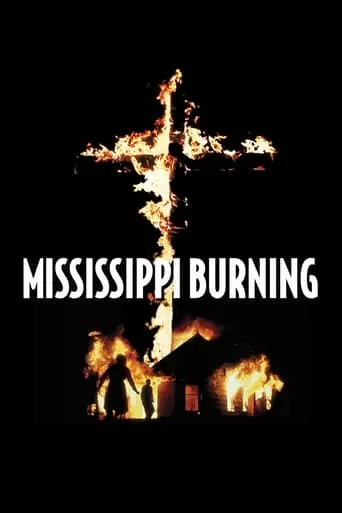
Mississippi Burning (1988) Watch Online Free
Two FBI agents investigating the murder of civil rights workers during the 60s seek to breach the conspiracy of silence in a small Southern town where segregation divides black and white. The younger agent trained in FBI school runs up against the small town ways of his partner, a former sheriff.
Mississippi Burning (1988) is a gripping crime thriller that explores the events surrounding the 1964 murders of three civil rights workers in the racially segregated South. Directed by Alan Parker, it stars Gene Hackman and Willem Dafoe as FBI agents tasked with solving the case. The film, although dramatized, is inspired by true events—the disappearance and death of activists James Chaney, Andrew Goodman, and Michael Schwerner, who were working to register Black voters during the “Freedom Summer” campaign.
The film takes place in Mississippi, where the two FBI agents, Rupert Anderson (Hackman) and Alan Ward (Dafoe), are sent to investigate the disappearance of the three civil rights workers. Anderson is a seasoned investigator familiar with the racial tensions of the area, while Ward is a younger, more idealistic agent from the North. Their differing methods create tension, but ultimately they combine forces to uncover the truth.
As they delve deeper into the case, they discover widespread corruption and violent resistance from local authorities and the Ku Klux Klan. Despite being met with resistance, the agents slowly gain information, sometimes by aggressive means, exposing the town’s complicity in the murders. Ultimately, the investigation leads to the indictment of several Klan members, although justice is far from fully served. The film closes with a poignant moment, reflecting the ongoing struggle for racial equality and justice.
Mississippi Burning was controversial for its historical liberties, but it succeeded in raising awareness about the deep-seated racism of the South during the civil rights movement. The film provoked discussions about the ethics of the FBI’s investigative methods, portraying them as morally ambiguous in their pursuit of justice.
The movie’s impact extended beyond the screen, drawing attention to the civil rights struggle in the United States and further educating audiences about the extent of racial violence and injustice that existed in the 1960s. It also highlighted the broader historical context of the civil rights movement, with its powerful depiction of the personal and collective struggles for justice.
After watching Mississippi Burning, expect to feel both emotionally drained and contemplative. The film is a stark reminder of the horrors of racism and the violence faced by those who fought for equality. While it may evoke feelings of anger and sorrow, it also inspires reflection on the progress made and the work still required to achieve true justice and equality. The complex characters and moral questions raised in the film will linger, prompting viewers to consider the challenges of standing up to systemic oppression.
Ultimately, you will likely leave the film with a sense of awe for the courage of those who challenged the status quo, as well as a deeper understanding of the history of racial tension in the United States.
